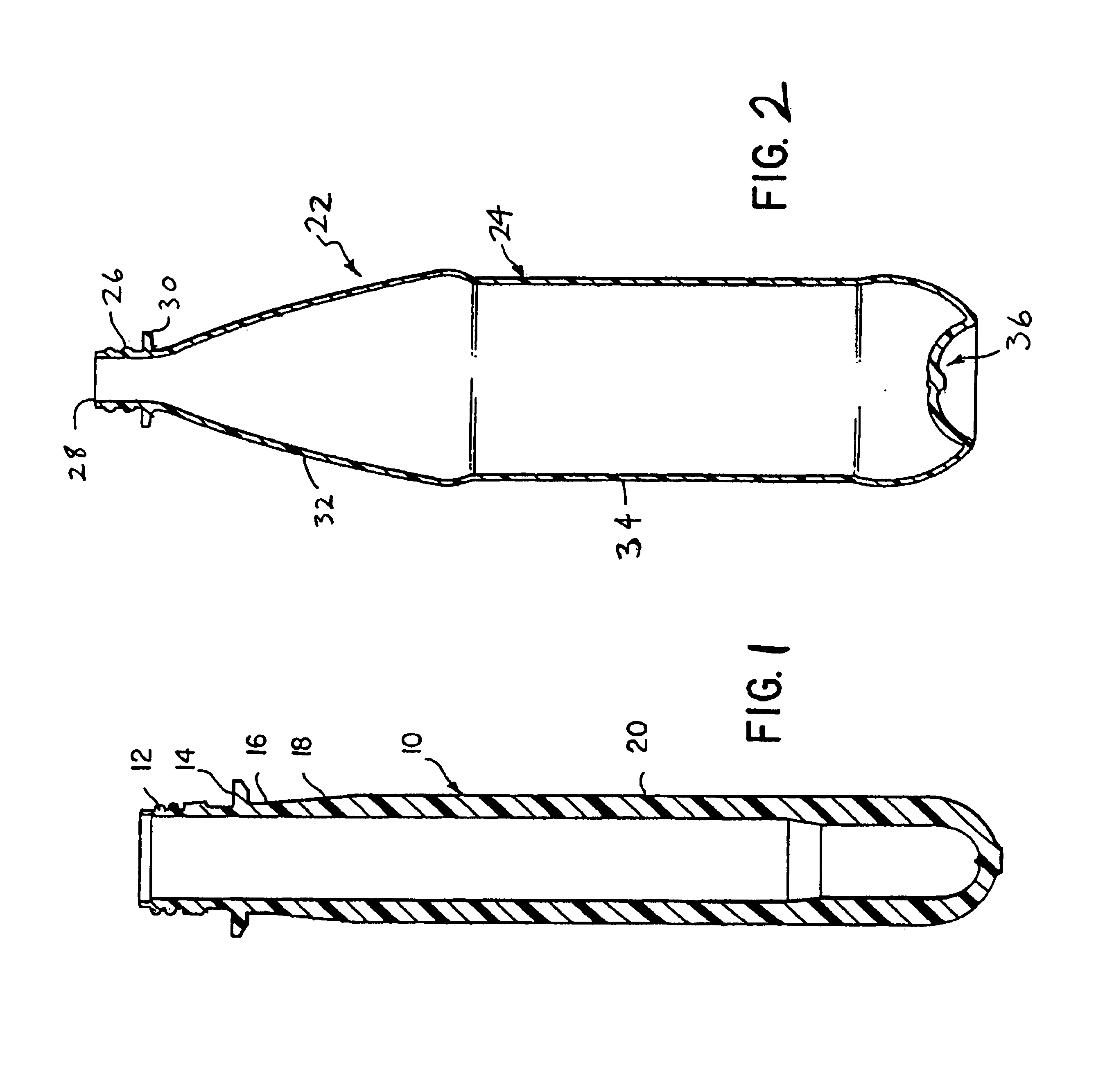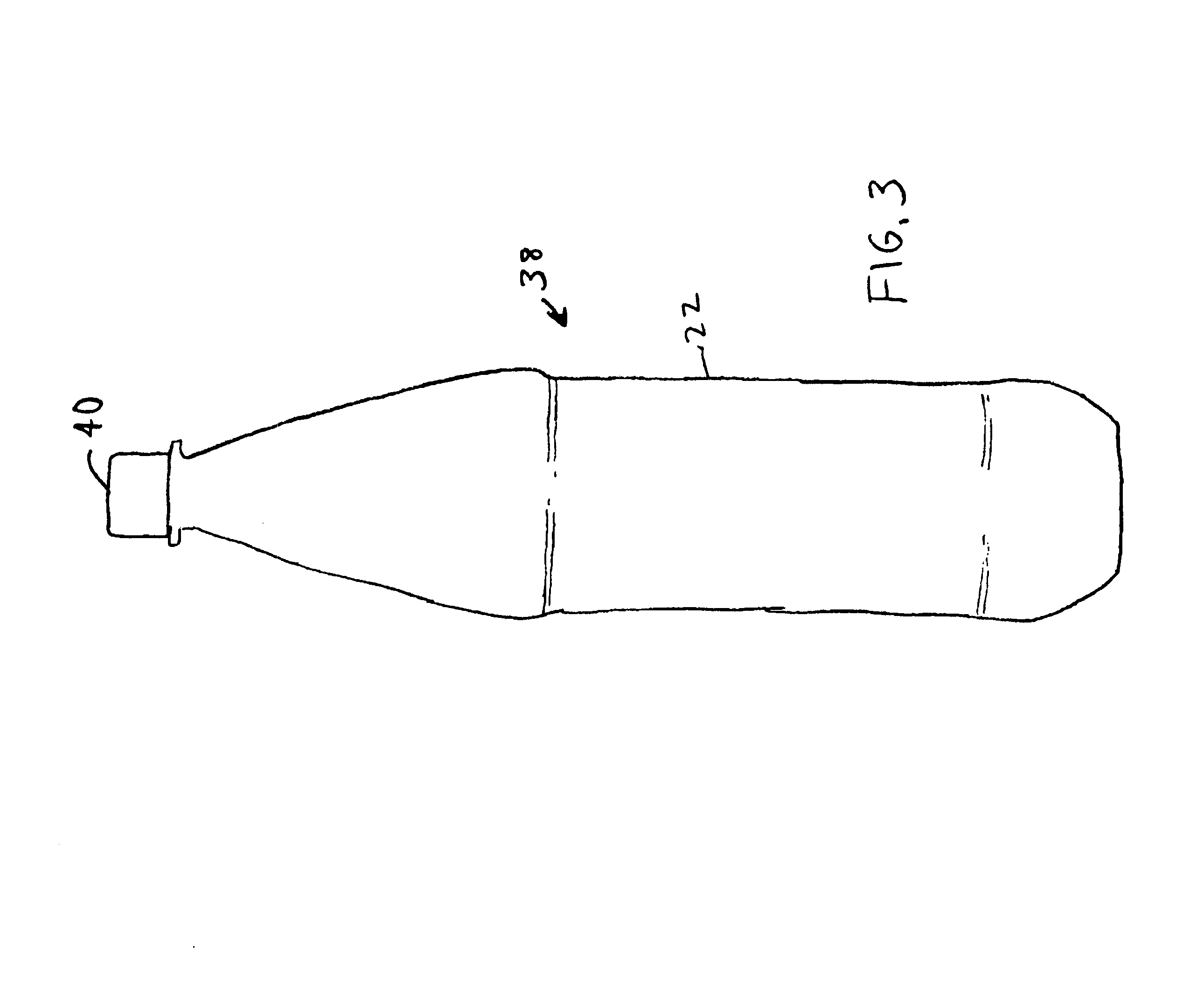Polyester composition and articles with reduced acetaldehyde content and method using hydrogenation catalyst
- Summary
- Abstract
- Description
- Claims
- Application Information
AI Technical Summary
Benefits of technology
Problems solved by technology
Method used
Image
Examples
examples
[0038]The following examples, with the exception of Examples 10, 16, 22, 23, 28, 31, 32, and 34 (comparative examples) illustrate the use of the present invention for decreasing the acetaldehyde content of melt-processed PET. In these examples, the acetaldehyde content was determined by taking a representative portion of the melt-processed polyester, grinding to pass a 2 mm screen, and desorbing the contained acetaldehyde from the polyester by heating at 150 deg C. for 45 minutes in a sealed vial. The desorbed acetaldehyde was then analyzed using a gas chromatograph equipped with a flame ionization detector. Beverage acetaldehyde levels were determined by removing a 5 ml aliquot of the beverage, placing the aliquot into a 20 ml vial, adding 1 gram of sodium chloride, and desorbing the contained acetaldehyde at 80 deg C. for 30 minutes, followed by analysis of the beverage headspace using a gas chromatograph equipped with a flame ionization detector. Headspace acetaldehyde was determ...
examples 1-4
[0039]In the following examples, PET 8006 pellets (from Shell Chemical) were dried in a vacuum oven to between 50 and 100 ppm residual moisture. The selected hydrogenation catalysts and poly(methylhydro)siloxane (PMHSO) were suspended in mineral oil, and were coated onto the PET pellets by tumbling. The resulting coated PET pellets were extruded at 265 deg C. through a ¾ inch single screw extruder. The total residence time for extrusion was 90 seconds. The resulting extruded PET was quenched in water. After 30 minutes of continuous extrusion, a portion of the extruded PET was isolated, ground, and subjected to analysis for AA content. The results below are reported as % decrease in AA content vs. a PET control containing the same amount of mineral oil. In all cases the mineral oil content was 0.2%. The equation for calculating the percent decrease in acetaldehyde (AA) content is as follows:
[0040]
Percent decrease=(AA content control−AA content test material) / (AA control))×100
[0041]
E...
examples 5-9
[0042]In the following examples, PET 8750 pellets (from Teijin) containing (50 ppm germanium as a polycondensation catalyst) were dried in a vacuum oven to between 50 and 100 ppm residual moisture. The selected hydrogenation catalysts and poly(methylhydro)siloxane (PMHSO) were suspended in mineral oil, and were coated onto the PET pellets by tumbling. The resulting coated PET pellets were extruded at 510 deg F. through a ¾ inch single screw extruder. The total residence time for extrusion was 90 seconds. The resulting extruded PET was quenched in water. After 30 minutes of continuous extrusion, a portion of the extruded PET was isolated, ground, and subjected to analysis for acetaldehyde content.
[0043]The results below are reported as % decrease in acetaldehyde content vs. a PET control containing the same amount of mineral oil. In all cases the mineral oil content was 0.2%. The same equation for calculating the percent decrease in acetaldehyde (AA) content was used as before.
[0044]...
PUM
| Property | Measurement | Unit |
|---|---|---|
| Fraction | aaaaa | aaaaa |
| Fraction | aaaaa | aaaaa |
| Fraction | aaaaa | aaaaa |
Abstract
Description
Claims
Application Information
 Login to View More
Login to View More - R&D
- Intellectual Property
- Life Sciences
- Materials
- Tech Scout
- Unparalleled Data Quality
- Higher Quality Content
- 60% Fewer Hallucinations
Browse by: Latest US Patents, China's latest patents, Technical Efficacy Thesaurus, Application Domain, Technology Topic, Popular Technical Reports.
© 2025 PatSnap. All rights reserved.Legal|Privacy policy|Modern Slavery Act Transparency Statement|Sitemap|About US| Contact US: help@patsnap.com



